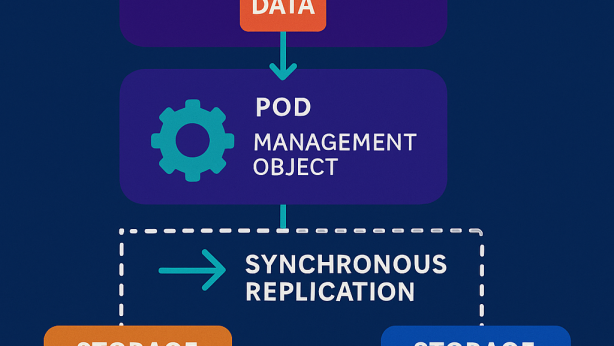SYSTEM AND METHOD FOR BUILDING COMPUTER APPLICATIONS USING LARGE LANGUAGE MODEL CHATBOTS
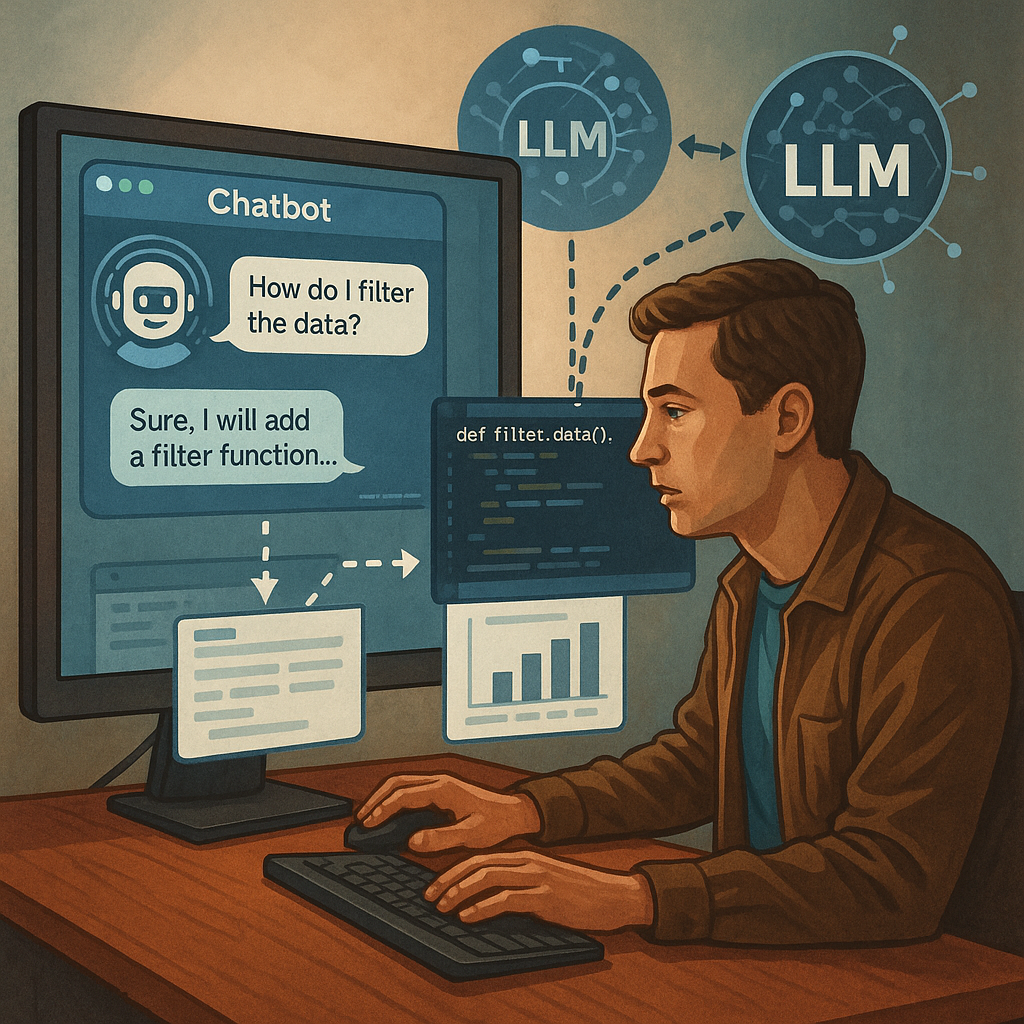
Invented by CARON; Nathaniel, Yuan; Xuan, Carvalho; Alexandre, Cvent, inc.
Let’s talk about something new and very exciting: using large language model (LLM) chatbots to not just answer questions, but to actually help build computer applications and run functions. A recent patent application describes a system that lets a computer receive a user’s question, figure out what the user wants, ask an LLM chatbot like ChatGPT for advice, run computer functions, and then come back with an easy-to-understand answer. In this article, we’re going to break down how this works, why it matters, and what makes this invention special.
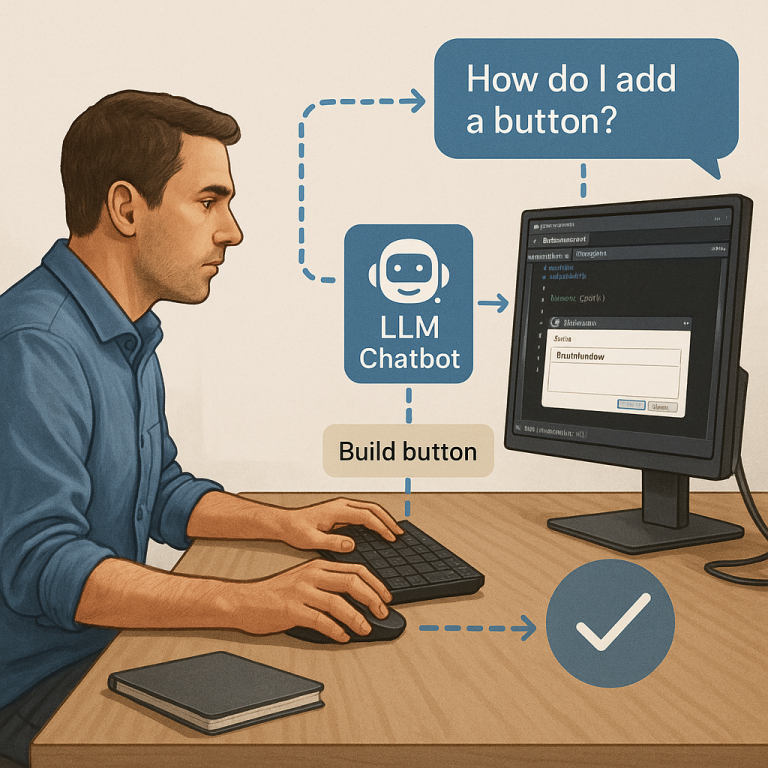
Background and Market Context
To truly understand this invention, you need to know the problem it solves. Today, building software is still hard for most people. Programmers spend a lot of time figuring out which commands or functions to call and in what order. Even with many tools and frameworks out there, building or updating computer programs means you need to understand programming languages, APIs, and a lot of technical stuff. This is a real barrier for non-programmers, and even slows down professionals.
Recently, we’ve seen a huge wave of AI-powered tools, especially chatbots like ChatGPT, Bard, Bing, and Grok. These tools can answer questions, help write code, and explain things in plain language. But there’s still a gap: they don’t actually call real computer functions or update real applications on their own. They can suggest code, but someone still has to take that code, understand it, and run it.
Imagine if you could just tell a computer, “Change the color palette of my app,” or “Send an email to my team,” and everything else happened automatically. The AI would not just suggest what to do, but actually do it—safely, correctly, and efficiently. That’s what this patent application is all about.
The market for tools that make building apps easier is huge. Businesses want to automate tasks. People want to build apps without learning code. Developers want to speed up their work. If you can connect natural language (plain English) to real computer actions, you unlock a new world of easy automation and software creation.
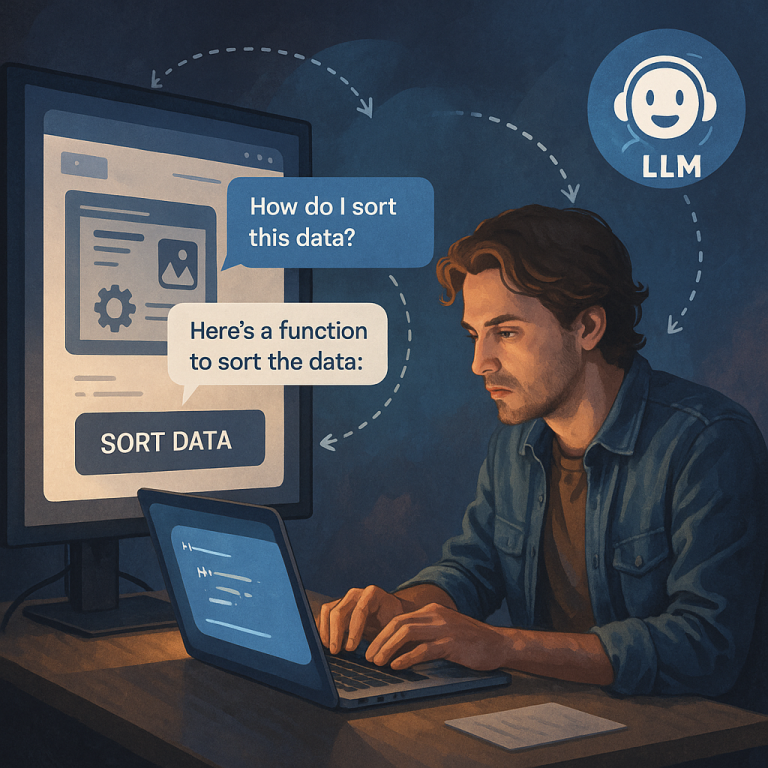
Companies are racing to make this happen. We see low-code and no-code tools, but even they require learning new interfaces. The real game-changer is when you can just “talk” to a computer, and it will figure out what you want, talk to an AI for advice, run real computer functions, and explain the result back to you. That’s what this new system promises, and that’s why it could change the way we all interact with computers.
Scientific Rationale and Prior Art
This patent application stands on the shoulders of some exciting ideas in artificial intelligence, software engineering, and user-computer interaction. Let’s unpack the science and the state of the art that lead up to it.
First, large language models (LLMs) are AI systems trained on massive amounts of text. They can understand questions, generate new answers, and even write code. Examples include OpenAI’s ChatGPT, Google’s Bard, Microsoft’s Bing Chat, and X’s Grok. These models have become skillful at reading user requests and giving advice, but they usually don’t take direct action in the real world. They suggest, but don’t do.
The idea of using AI to help people build software isn’t new. There are tools for code completion, bug fixing, and even some no-code platforms where users can drag and drop app features. But these tools have limits. Code completion tools like GitHub Copilot can suggest code, but the user still has to read and run it. No-code tools make it easier to build apps, but you still have to figure out how to connect different building blocks and learn a new way of working.
Some projects have tried to let users “talk” to computers in plain language. Early chatbots could answer questions, but didn’t actually run real computer functions. Even the best AI assistants today usually only suggest what to do, or help you search for answers—they rarely carry out multi-step actions, fetch data from APIs, or update real applications automatically.
One big challenge is context. If you say, “Change my dashboard to show sales data,” how does the system know which dashboard, which sales data, and what you really want? The answer is context detection—figuring out what the user’s request is really about, and choosing the right computer functions to make it happen. Some systems use keyword matching, others use more advanced “embeddings”—ways to turn words into numbers that capture meaning.
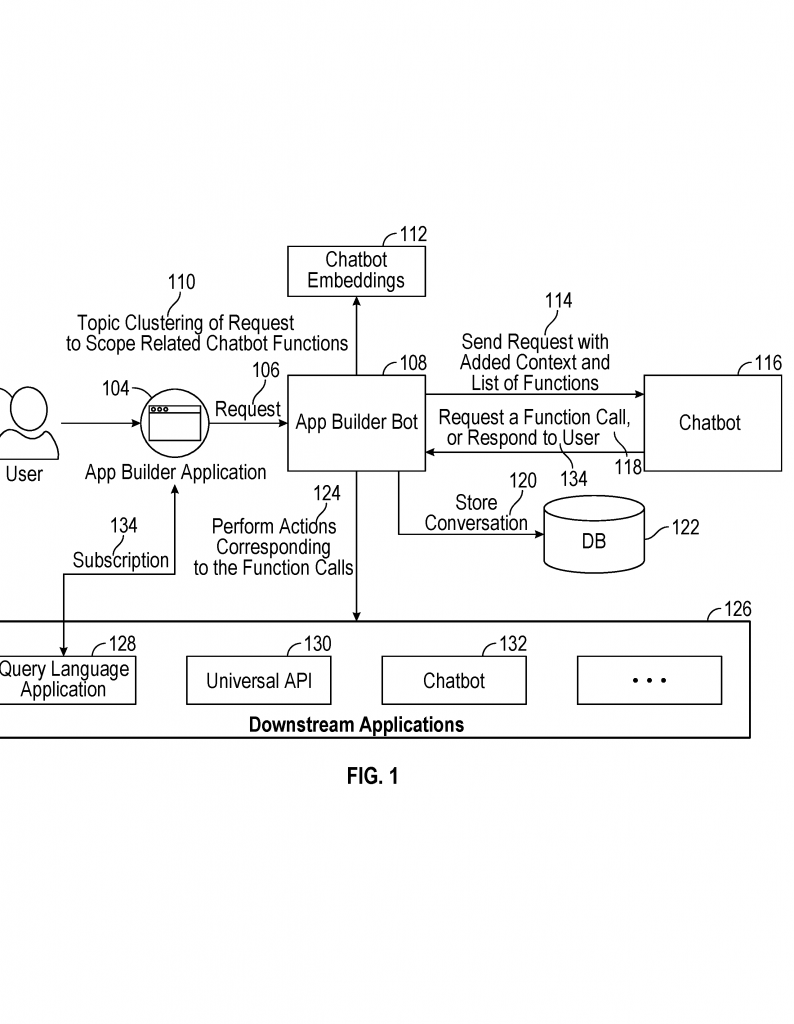
There’s also the problem of keeping conversations going. Many chatbots forget what happened earlier, so they can’t handle multi-step requests or remember what you’ve already asked. For a system to be truly helpful, it has to remember past interactions and keep track of the back-and-forth with the user and the AI.
Finally, there’s the technical challenge of connecting the AI to real computer functions. That means running code, calling APIs, fetching data, and making sure everything happens in the right order. This is tricky, because it means trusting the AI to suggest safe and correct actions, and making sure those actions match what the user wants.
This patent application brings all these ideas together in a new way. It describes a system that acts as a middleman: it takes the user’s request, figures out the context with embeddings and topic clustering, sends the request (plus context) to an LLM chatbot, gets back a list of real computer functions to run, executes those functions, and then sends the results back to the AI to get a final answer for the user. It also keeps track of the whole conversation, so nothing gets lost along the way.
While others have suggested pieces of this idea, or built tools that do some of it, this system puts all the parts together. It’s not just an AI that suggests code, or a no-code tool that runs pre-set actions. It’s a system that lets users interact in natural language, uses AI to plan and suggest real computer actions, runs those actions, and makes sure the user gets a clear, natural answer every time. That’s what makes it new—and that’s why it’s patentable.
Invention Description and Key Innovations
Let’s dive into what this invention does, step by step, and see what makes it different from anything before.
Imagine you’re sitting at your computer, using an app called “App Builder Bot.” You type in a question or request—maybe, “Update the background color to blue,” or “Send a summary report to my boss.” Here’s what happens next, behind the scenes:
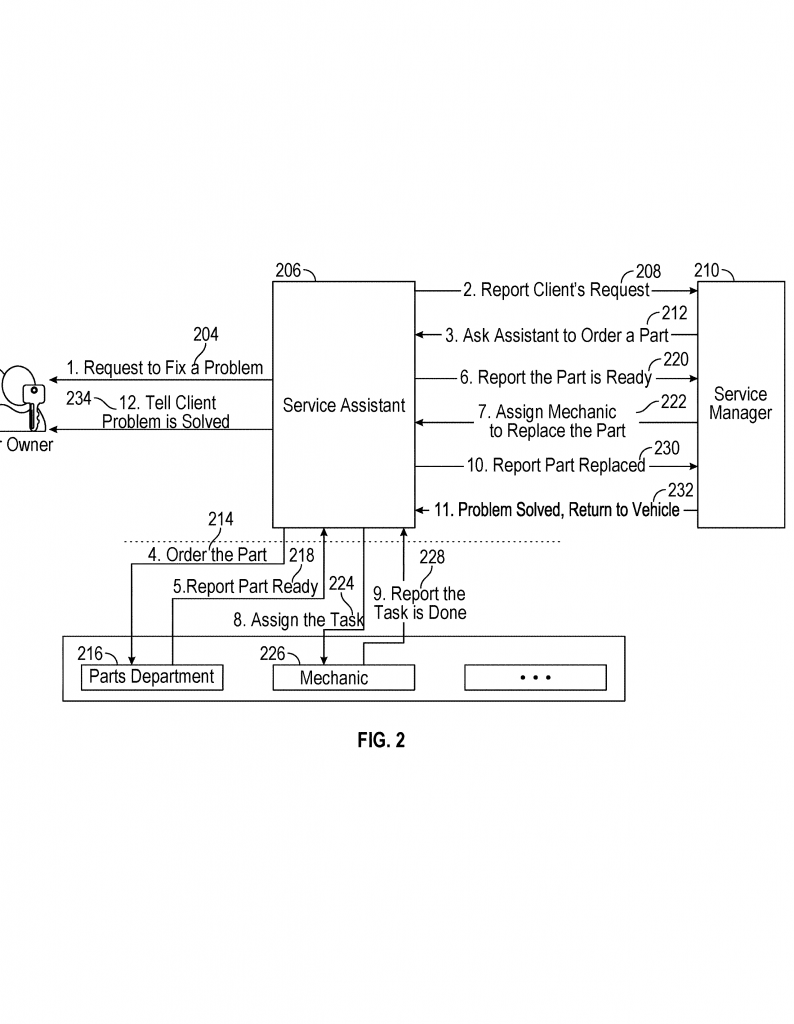
1. Receiving the Question: The system gets your request. It could be a question, a command, or a problem you want to solve.
2. Figuring Out the Context: The system uses natural language processing to figure out what your request is about. It does this by turning your request into an “embedding”—a set of numbers that capture the meaning of your words. It then compares this embedding to its list of topics, to see what you’re really asking for. This helps the system narrow down the possible actions it can take.
3. Preparing the Request for the AI: Instead of sending everything to the AI chatbot, the system sends only what’s relevant. It includes your original request, plus any context and a short list of possible functions the AI can use. This saves bandwidth and makes things faster because the AI doesn’t have to sort through a huge list of unused options.
4. Talking to the LLM Chatbot: The system sends the request and context to a powerful AI chatbot like ChatGPT, Bard, Bing, or Grok. This AI looks at the request, the context, and the available computer functions, and decides which ones should be called. The AI also figures out the order to run them and what inputs (like “blue” for the color) are needed.
5. Running the Functions: The system gets the AI’s answer—a list of functions to call, with the right inputs. It then runs these functions itself. This could mean changing a setting in an app, sending an email, fetching data, or anything else the functions are set up to do.
6. Sending Results Back to the Chatbot: Once the functions are done, the system sends the results back to the AI chatbot. The AI uses these results to create a final, human-friendly answer. For example, if you asked to update the color, the AI might say, “Palette updated. Are you happy with the new color?”
7. Giving the User a Natural Answer: The system sends this natural language answer back to you, closing the loop. If you want to go further or make another request, the system keeps the conversation going, remembering what’s happened so far.
This process repeats as needed, handling even complex or multi-step requests without losing track of what’s going on. The system can talk to databases, APIs, or even other chatbots to get the information or carry out the actions you want.
Now, let’s look at some of the clever tricks and special features that make this invention work so well:
Smart Context Detection: The system doesn’t just look for keywords; it uses embeddings and measures how close your request is to different topics using things like Cosine distance. This just means it can tell what you’re really asking for, even if you use unusual words or phrasing.
Efficient Data Handling: By only sending relevant functions and context to the AI, the system saves time and bandwidth. This is important for speed and for making sure the AI doesn’t get confused by too much information.
Conversation Management: The system keeps track of the whole back-and-forth, so it can handle multi-step requests, remember what’s already been done, and pick up where you left off. If you want to start fresh, you can—otherwise, it keeps the thread going.
Flexible AI Integration: The invention isn’t tied to just one AI chatbot. It can work with ChatGPT, Bard, Bing, Grok, and others. This means it can take advantage of the latest improvements in AI as they come out.
Real, Actionable Responses: Unlike old chatbots that just suggest things, this system actually runs computer functions and changes real applications or data. The AI plans, but the system does the work, and everything is double-checked by the AI before you see the result.
Secure, Scalable Design: The system can store conversation history, keep track of user IDs, and work across many different devices and setups. It can run on one computer or across many, handle lots of users, and even save new embeddings for future use.
This is much more than just a chatbot or a code helper—it’s a true assistant that can turn words into real, working actions.
Conclusion
This invention is a big step towards making computers easier for everyone to use. It connects natural language requests to real computer actions, using the power of LLM chatbots and smart context detection. Whether you’re a business owner, a software developer, or just someone who wants to get things done, this system makes it possible to build and manage applications just by asking for what you want. It saves time, reduces mistakes, and opens up a world where anyone can harness the power of AI and automation. As AI keeps improving, inventions like this will shape how we all interact with technology in the future. If you want to be ready for the next wave of digital transformation, keep an eye on this space—because the future of app building might just be as simple as asking for what you need.
Click here https://ppubs.uspto.gov/pubwebapp/ and search 20250216955.

